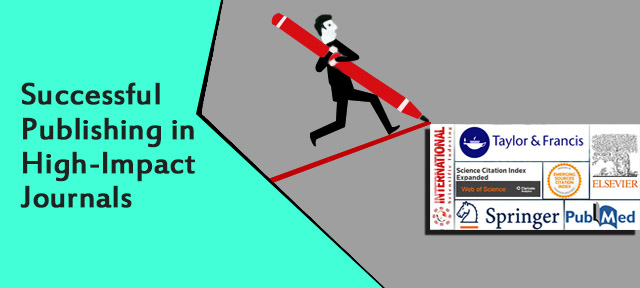Publication of your paper is a significant reflection of your accomplishment in the research domain. It is a fillip to both your academic position and career prospects. To enhance the impact, it is desirable to publish your paper in a high-impact journal. That is why budding as well as established scientists and researchers need to focus on a journal’s impact factor.

High impact factor journal
A journal’s impact factor depends on the citations it has received in the preceding two years relative to the number of published articles during these years. The impact factor has become the default metric to assess the reputation and quality of a journal and is a major consideration by authors, institutions, and employers alike. It is a lot easier to pursue and secure jobs, grants,and other funding after you become a published author in a high-impact-factor journal.
What are indexed journals?
Several databases index journals based on their quality. One can search any journal in the database through PubMed or SCOPUS. SCOPUS-indexed journals are considered more prestigious and have a high impact factor. Being published in an indexed journal significantly enhances the value of your research and could subsequently increase the citation count of your article.
Keys to publish your paper successfully
It is always suggested to select a target journal before drafting your paper and to follow the journal guidelines while writing, rather than adjusting your paper to fit the guidelines as a last step. That would save you a lot of time and make life easier.
The successful publication of your paper in a reputed journal depends on a number of factors that need to be taken care of:
- The concept of the paper should be novel,including a key message with noteworthy conclusions that have not been published earlier.
- The title should be short, concise, and clear.
- The abstract should briefly present an introduction to the topic, communicate the research problem to the readers, summarize the main results, and then state a perspective on possible benefits and advantages of the findings.
- The main findings of the work should be well written and interesting for the readers.
- The article must meticulously follow the formatting style and guidelines of the target journal.
Facing Rejections
In aiming for high-impact journals, you must bear in mind that they have a very low acceptance rate. Therefore, you must be prepared and resilient enough to experience rejection from some journals in your publication journey. Rejections can be unpleasant and disheartening, and especially so if the reviewers overlook the primary objective of your paper. Conversely, rejections can happen if you, as the author,fail to put across your research perspective in a clear and lucid manner.
There are, however, useful takeaways from a rejection. You might receive detailed comments from the reviewers in the rejection communication, which you can leverage in your next submission to another journal. If you address the concerns of the reviewers adequately, it would be that much easier to get an acceptance in the resubmission. Most papers can be improved in the light of critical (but constructive) comments and then find acceptance in a high-impact journal and receive numerous citations.
Happy publishing!

